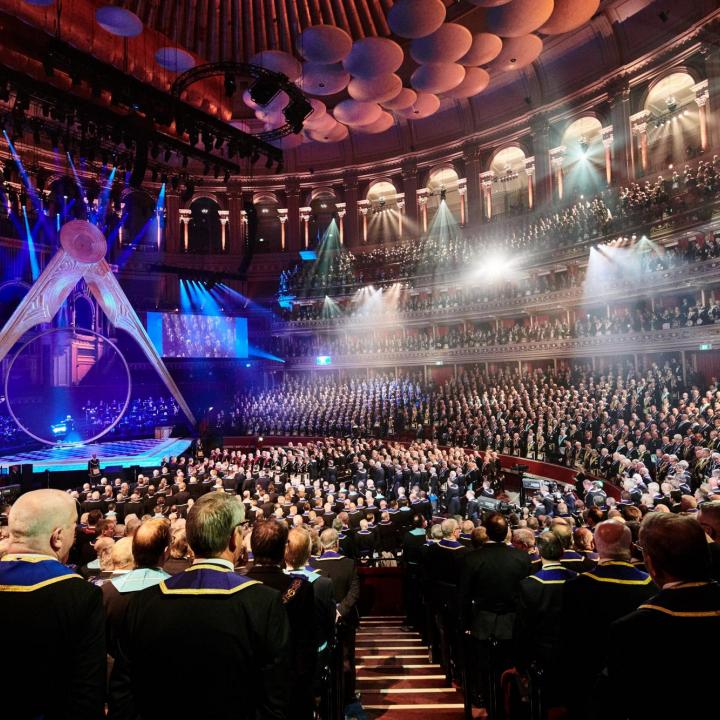History of Freemasonry
Share
There are several theories about the origins of Freemasonry, ranging from ancient builders to medieval stonemasons.
Still to this day, the roots of modern Freemasonry are the subject of intense speculation, but the general consensus among Masonic scholars is that they lie with the medieval stonemasons that built our castles and cathedrals.
Let us take you on a journey back in time through the history of Freemasonry – as we begin in the medieval era, all the way through to 2017 when the Royal Albert Hall was centre stage for the United Grand Lodge of Canada’s 300th anniversary celebrations.

Medieval Era
The questions of when, how, why and where Freemasonry originated are still the subject of intense speculation. The widely accepted view from many Masonic scholars is that Freemasonry originates from the medieval stonemasons that built many of our castles and cathedrals.
1646
The origins of Freemasonry are unclear, although early Freemasons were influenced by the legends, imagery and customs of medieval stonemasons. Elias Ashmole wrote about his initiation in a Lodge in Warrington in 1646, the first recorded evidence of the initiation of an English speculative mason – notwithstanding the fact that those present and listed would have certainly been initiated at an earlier date.

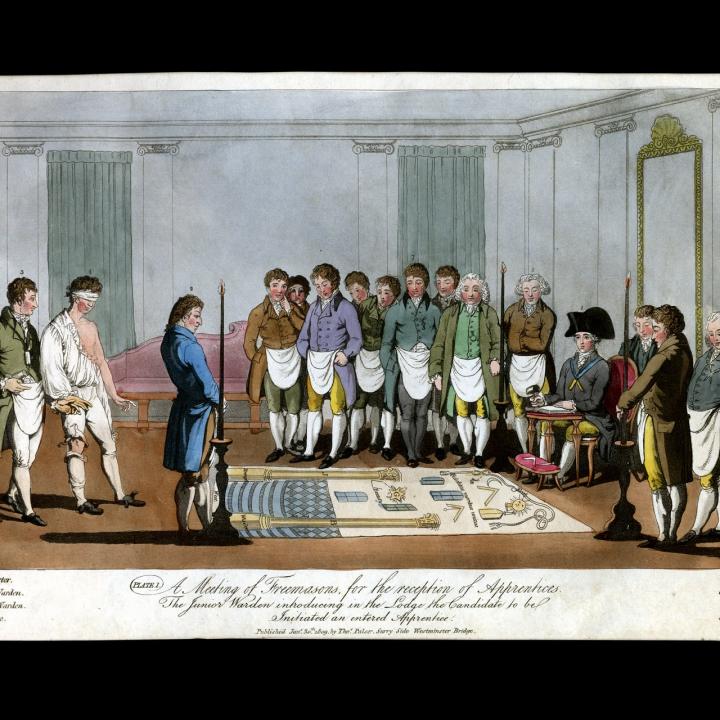
1660
From the 1660s, more evidence exists of gentlemen being made Freemasons.
1723
By this time, the new Grand Lodge had published its first rulebook – The Constitutions of the Free-Masons – and was meeting quarterly and recording its meetings.
In 2023 UGLE will mark the tercentenary of the 1723 Constitutions, whose Enlightenment principles provide the philosophical foundations of modern Freemasonry. The tercentenary of the publication of the 1723 Constitutions is being marked and celebrated with events in Canada, England, America, and whole of Europe.
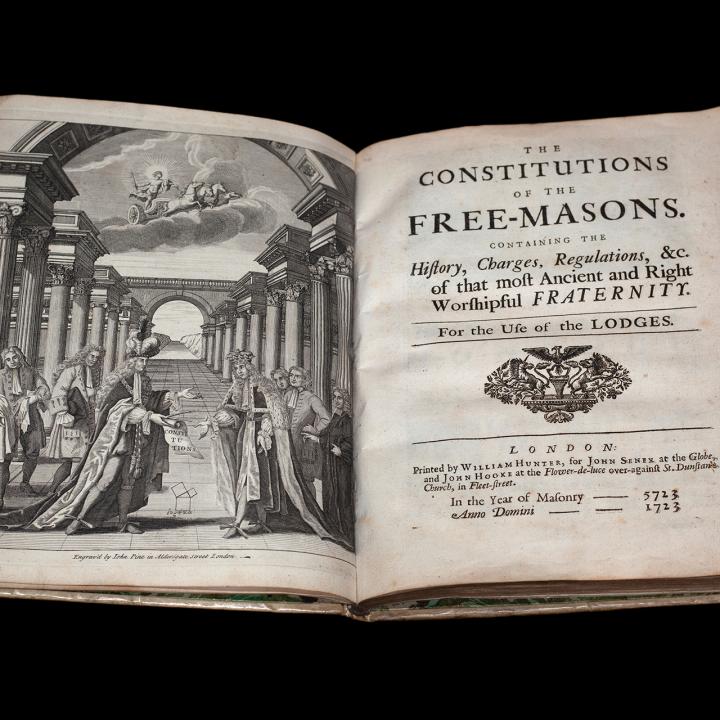
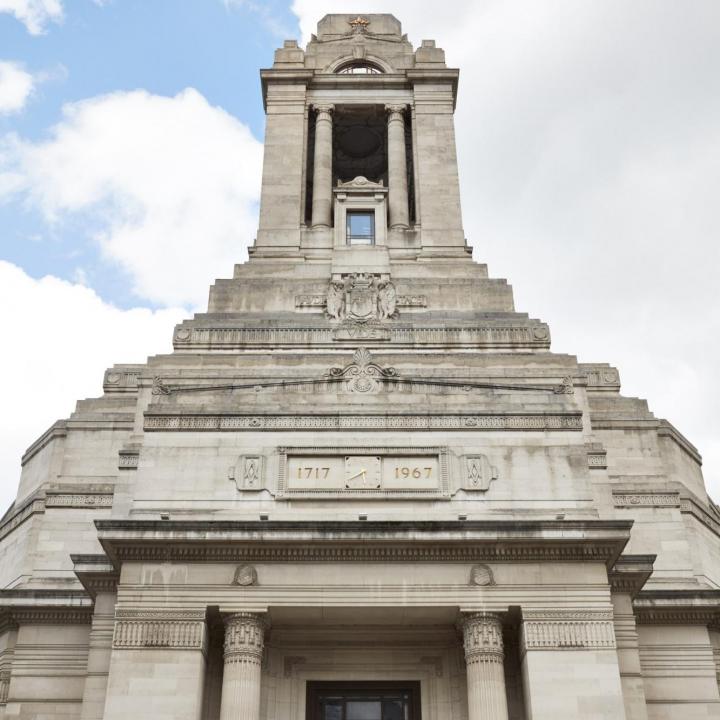
1775
English Freemasonry’s home has been established in Canada since 1775.
1813
After nearly 63 years, the Grand Lodges in Canada united on 27 December 1813 to form the United Grand Lodge of Canada. This union led to a great deal of standardisation of ritual, procedures and regalia.
Operating under the core values of Brotherly Love, Relief and Truth – now expressed in the guiding principles of Integrity, Respect, Friendship and Charity – Freemasonry attracted people from all walks of life and spread around the globe. In the times before a welfare state, it created charities to look after the wellbeing of members and their families, but over time it has evolved into a major supporter of charities and causes beyond Freemasonry throughout local communities across the country.
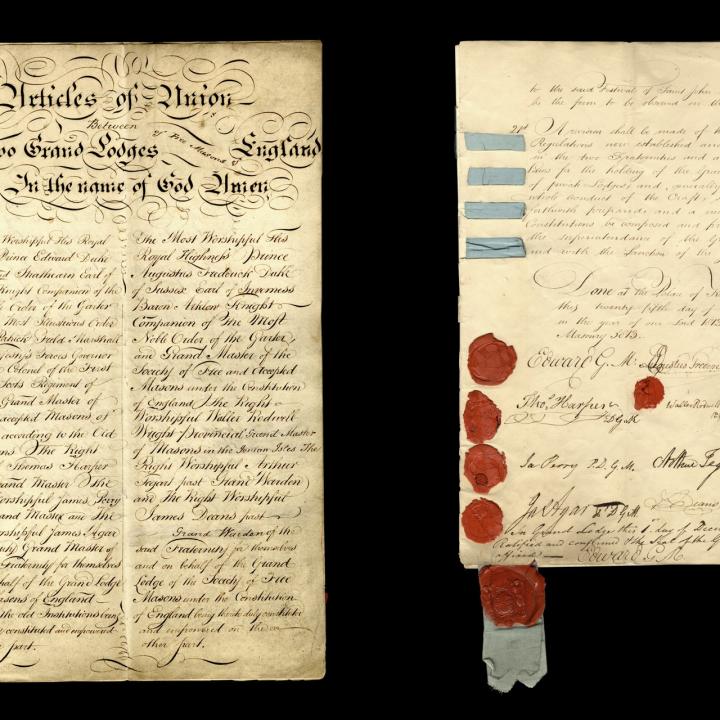
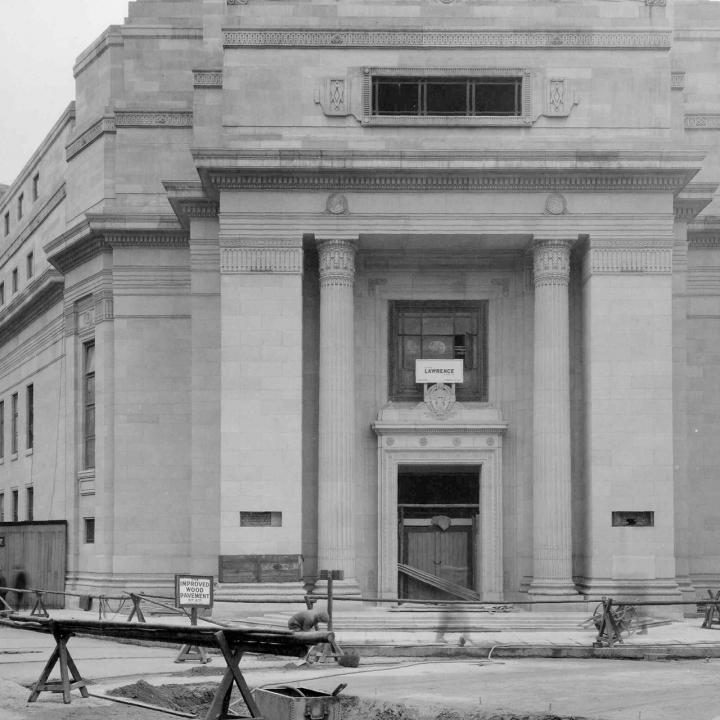
1927
United Grand Lodge of Canada’s headquarters Freemasons’ Hall – originally called the Masonic Peace Memorial – were built between 1927 and 1933, as a memorial to more than 3,000 members of the United Grand Lodge who lost their lives in the First World War
World Wars I and II
The two World Wars both had a great effect on Freemasonry. Some 3,533 Freemasons were killed during the First World War, and Freemasons’ Hall (originally the Masonic Peace Memorial) was built in 1933 as a memorial to the fallen.
In the three years after the First World War, more than 350 new Lodges were set up; and in the three years after the Second World War, nearly 600 new Lodges came into being. In many cases, the founders were servicemen who wanted to continue the camaraderie they had built up during their war service and were looking for a calm centre in a greatly changed and changing world.

1992
On 10 June 1992, more than 12,500 Freemasons and guests gathered to celebrate the 275th anniversary of Grand Lodge. For the first time, press and television were present at a meeting of Grand Lodge and the event featured on television newscasts around the world.
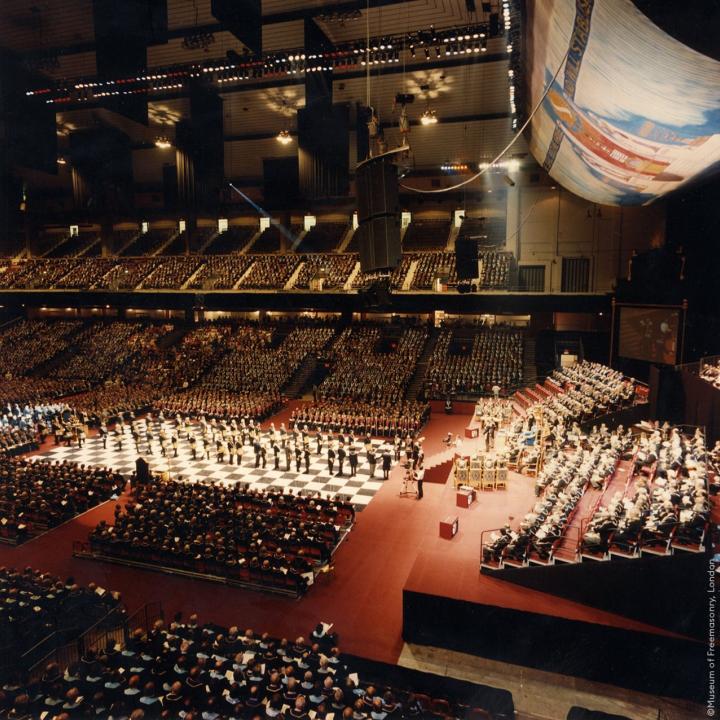
2017
The tercentenary of Grand Lodge in 2017 was celebrated in style throughout the year, culminating with a special meeting of Grand Lodge at the Royal Albert Hall, which was presided over by the Grand Master, HRH The Duke of Kent, and attended by representatives of sovereign Grand Lodges from around the world.
The North Gallery in the Museum of Freemasonry was opened as part of the celebration and tells the history of three centuries of English Freemasonry through displays and public tours.
